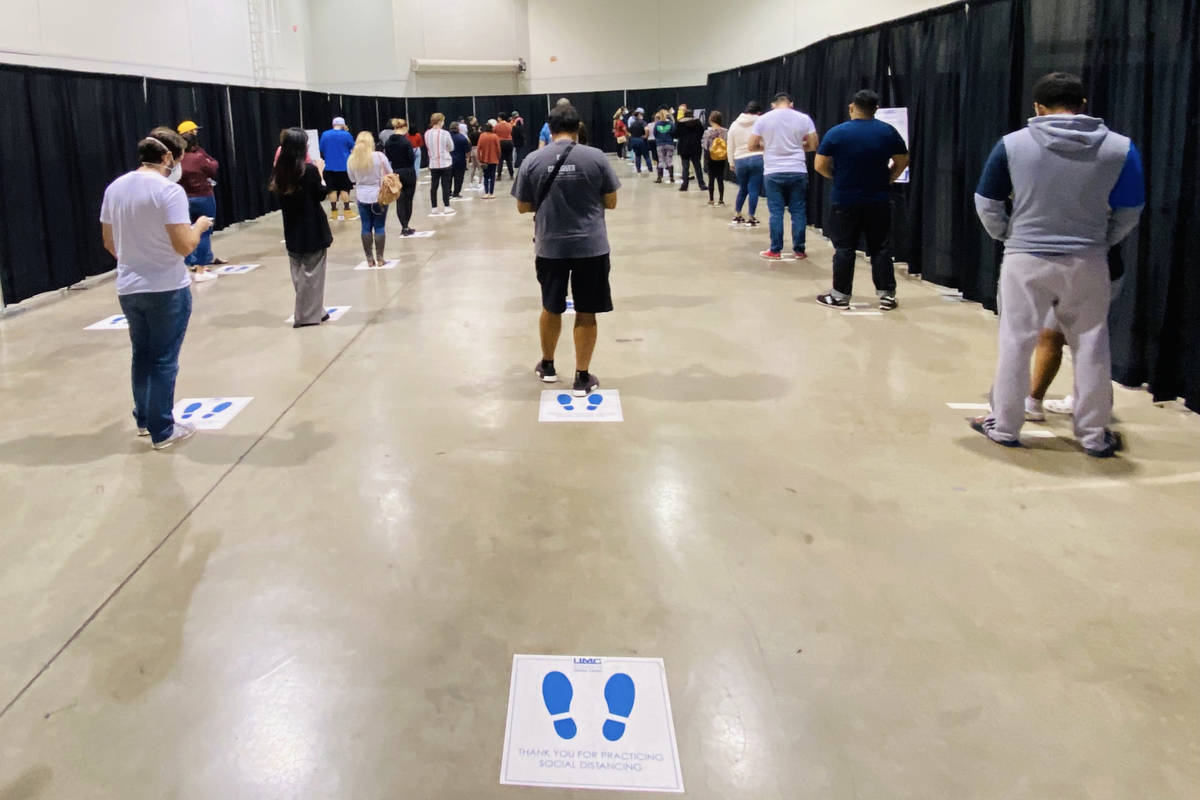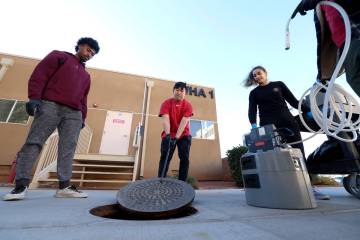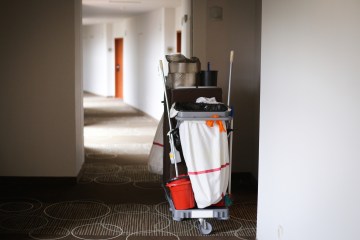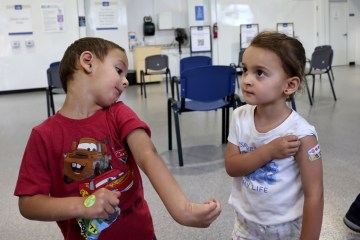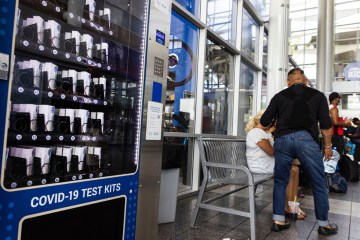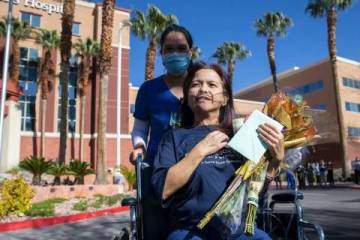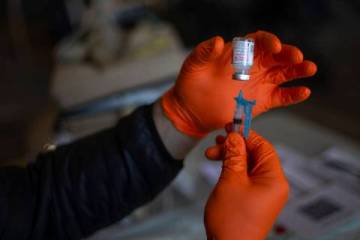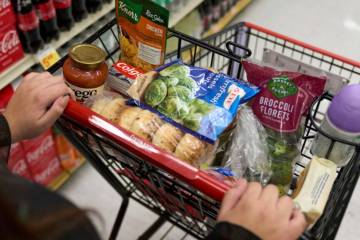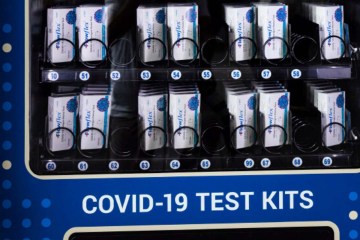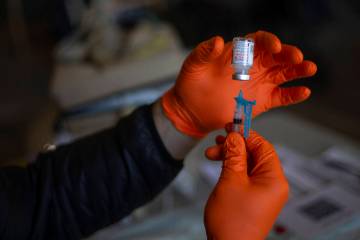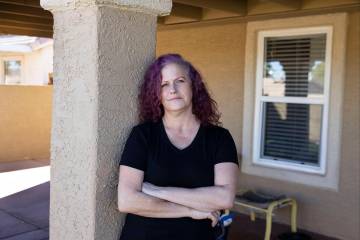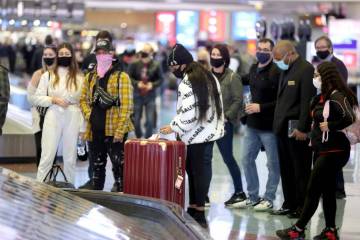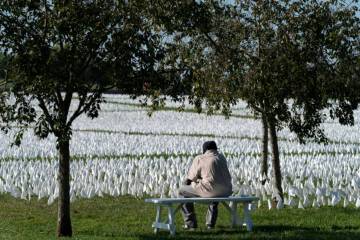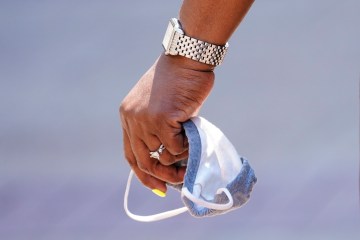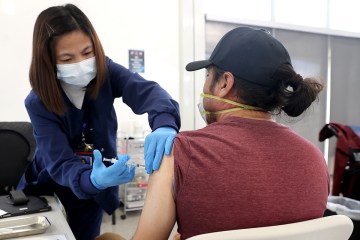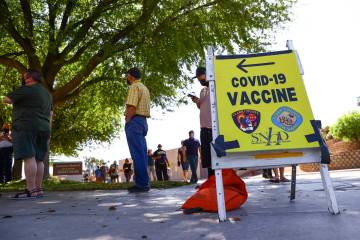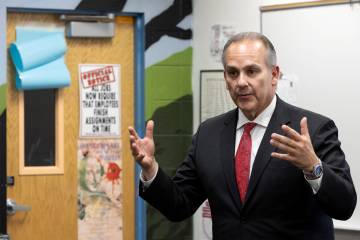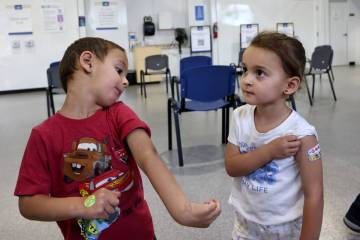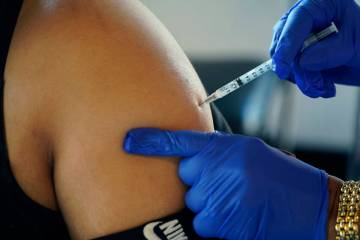Who’s getting sick in Nevada’s latest COVID surge?
Every minute, another Nevadan is diagnosed with COVID-19. Every two hours, an infected resident dies.
Those sobering statistics are our reality, state health officials say.
Nevada is experiencing a fall surge of COVID-19 that is spreading faster than its summer surge. Nearly half of the state’s more than 146,000 identified cases have been reported since mid-September.
“We’re actually truly in the middle of exponential growth,” state biostatistician Kyra Morgan said. “I can’t imagine that we don’t see a significant amount of growth continue over the next couple of months.”
But what is driving the trend, and who is being hit the hardest? The analysis reflects data posted by Nevada Department Health and Human Services as of Nov. 27.
Younger people still drive COVID spread
Nevadans in their 20s and 30s continue to test positive at disproportionately large rates.
They make up about 40 percent of recent cases where the infected person’s age is known, while only accounting for about 28 percent of the state’s population.
It’s a familiar trend, Morgan said. “Since about June, we’ve seen just a lot of consistency as far as what age groups are being infected,” she said.
Meanwhile, the vast majority of Nevadans killed by the disease continue to be people in their 60s and 70s, with underlying conditions. In Clark County, more than 70 percent had underlying health conditions, making them more susceptible to severe outcomes, local data released this week shows.
Smaller share of infected see severe outcomes
But while Nevadans are testing positive at higher rates than ever before, the state is seeing a smaller ratio of hospitalizations and deaths per infection.
During the summer wave, about 10 percent of active cases required hospital treatment, Morgan said. Now, its only about 5 percent.
That could be because the large numbers of younger people catching COVID-19 are less likely to see severe outcomes, Morgan said. Or it could be because testing is more widely available than ever before, leading to more infected people with mild or no symptoms to get tested. It also could be because doctors are learning how to better treat COVID-19 with drugs and therapy.
Deaths also are occurring at a slower rate than in the summer, although they have risen across recent weeks. One expert said the worst may be yet to come.
“It’s too early to really make a good comparison of the deaths, because we’re not at the (fall surge) peak currently,” UNLV epidemiologist Brian Labus said.
In October, Nevada released an official definition of what it considers a confirmed COVID-19 death.
Since September, data shows COVID-19 has killed more than 450 men in Nevada, but less than 300 women. It’s an imbalance that has been seen throughout the pandemic, despite more women testing positive.
The Nevada Hospital Association reported last week that fewer than 10 pediatric patients were currently hospitalized with COVID-19 statewide. The disease has killed fewer than five Nevada children.
White Nevadans see large case growth, Hispanic deaths still high
White Nevadans represent about 40 percent of recently identified cases, a portion larger than previously seen in the pandemic.
But this fall, Hispanic people have made up a larger share of COVID-19 deaths than they had previously.
In Clark County, the neighborhood with the most infected residents is heavily Hispanic. The 89110 ZIP Code continues to be the hardest hit, adding more than 2,400 cases since mid-September.
Asian, Black and Hispanic residents continue to die at rates higher than their white counterparts, based on their population sizes.
Prisons, military base see spike in cases
Nevada’s inmates have been particularly hard hit by the fall surge.
On Sept. 15, there were only 26 cases reported among inmates. As of Friday, it was 662.
Prison staff also have seen their reported cases triple from 115 to 356.
This month, officials reported more than 80 percent of inmates at Warm Springs Correctional Center in Carson City had tested positive. A similarly sized share of prisoners at the Humboldt Conservation Camp in Winnemucca also have been infected.
Data suggests a Southern Nevada military base has also had a recent outbreak.
Clark County’s 89191 ZIP Code, home to Nellis Air Force Base, saw an increase from fewer than 30 cases to 240 since mid-September.
When did this fall surge begin? And could it get worse?
Officials hesitate to put an exact date on it, but they agree that Nevada began seeing an upward trend around mid-September. Key metrics, such as hospitalizations and deaths, followed suit.
At first, the fall wave was rising more slowly than this summer’s. But rapid growth began around the beginning of November, Morgan said.
Morgan said she expects to see “a surge on top of a surge” following Thanksgiving, due to people traveling and gathering with friends and family members. Similar effects could be seen by Christmas and New Year’s Eve celebrations.
“I would be shocked to see a plateau in December,” she said. “I hope I’m wrong, but we have a lot of things working against us right now.”
Northern, rural Nevada feels brunt
Washoe County hospitals now are treating close to triple the amount of confirmed and suspected COVID-19 patients they saw during their busiest summer days.
In rural Nevada, cases have more than quadrupled in Mineral, Churchill, White Pine and Pershing counties since September. Lincoln County went from less than 10 cases t0 188.
“I would say everyone with the exception of Clark (County) is having a much bigger or worse wave now than what they saw in the summer,” Morgan said.
Meanwhile, Clark County is just now surpassing the hospitalization peak it saw this summer. The county has added more than 45,000 cases and 400 deaths since mid-September.
What can be done?
While it’s familiar advice at this point, Morgan said the best way to end the surge is for people is to wear masks, wash their hands, and limit their travel and social gatherings.
“It’s not that COVID is or was stronger, or more contagious, or something like that,” she said. “The characteristics of COVID are not changing. It’s just our behavior that’s causing the waves to come and go.”
Contact Michael Scott Davidson at sdavidson@reviewjournal.com or 702-477-3861. Follow @davidsonlvrj on Twitter.



